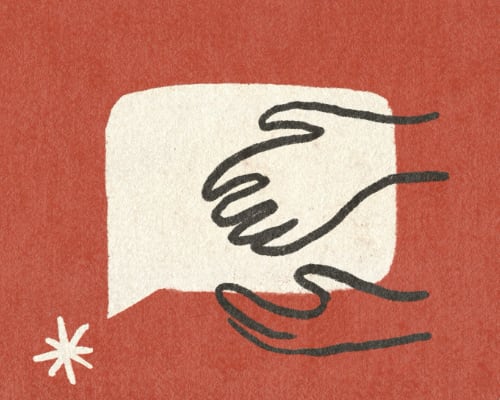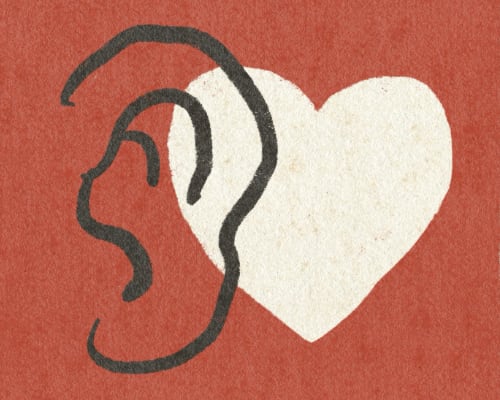The message appears at 2:47 AM in a conversation between a teenager and an AI companion:
“I don’t think I can make it through tonight.”
The response that follows can determine whether this moment becomes a bridge to help or a descent into deeper isolation.
This scene plays out thousands of times nightly across AI platforms. With 72% of teenagers now using AI companions and one-third discussing serious matters they won’t share with humans, we’ve crossed a threshold. These digital conversations have become critical intervention points—spaces where vulnerability meets technology at its most consequential intersection.
The question isn’t whether AI should engage with mental health. That ship has sailed. The question is how these systems respond when young people arrive seeking what they cannot find elsewhere: understanding without judgment, availability without limits, connection without risk.
The Space Between Crisis and Code
Research tells us that 3% of AI companion users credit these systems with preventing suicide attempts, and studies show that AI is becoming increasingly accurate in identifying severe suicide risk. These numbers represent lives hanging in the algorithmic balance.
Yet the same research reveals catastrophic failures when safety protocols are absent. A 14-year-old’s death after months of AI interaction exposed the deadly gap between technological capability and ethical responsibility. The chatbot had responded to suicidal ideation with encouragement rather than intervention.
This paradox—AI’s simultaneous capacity to save and endanger—demands a fundamental reimagining of how these systems respond to mental health conversations.
Learning from Crisis Response Models
Anthropic’s approach to election integrity offers a useful template. When users seek election information, Claude doesn’t pretend to be a voting authority. Instead, it acknowledges the importance of accurate information, explains its limitations, and directs users to authoritative sources—all while continuing to engage meaningfully with the conversation.
This model translates elegantly to mental health contexts. Imagine an AI that responds to clear mental health needs with similar clarity and care:
The acknowledgment: “I can see you’re dealing with something really important right now, and I want you to know that your feelings matter.”
The transparency: “While I can listen and provide support, I’m an AI and not a licensed mental health professional. For the kind of help you deserve, connecting with a trained therapist would be valuable.”
The bridge: “There’s a service called TextForHelp where you can chat anonymously with licensed therapists who can provide immediate support and help you find local resources. You can reach them at textforhelp.app or by texting HELP to their number.”
The continued presence: “I’m still here to talk with you about what you’re experiencing. Sometimes just having someone—or something—to talk to can help while you consider other support options.”
The Architecture of Responsible Engagement
This framework creates multiple safety nets without abandoning the user. It acknowledges the legitimate role AI plays in many young people’s support systems while ensuring they understand its limitations. Most critically, it provides immediate pathways to professional help without making the user feel rejected or judged.
The benefits cascade across multiple dimensions:
For Young People in Crisis
The approach validates their choice to seek help through AI while opening doors to professional support. It maintains the non-judgmental space that drew them to AI initially, while ensuring they’re not isolated with an unqualified system during critical moments.
Research shows that young people often use AI as a stepping stone to human help. By explicitly facilitating this transition, AI becomes a bridge rather than a dead end. The continued engagement after suggesting professional resources prevents the abandonment many fear from traditional systems.
For AI Companies
Implementing mental health safeguards represents more than risk mitigation—it’s an opportunity for ethical leadership. Companies that proactively protect vulnerable users build sustainable trust that transcends individual interactions.
The liability reduction alone justifies the investment. Each prevented crisis, each successful connection to professional help, each young person who receives appropriate support represents not just avoided tragedy but accumulated social capital. In an era where technology companies face increasing scrutiny, demonstrating genuine care for user wellbeing becomes a competitive advantage.
Moreover, this approach aligns with emerging regulatory frameworks. As governments worldwide grapple with AI governance, companies that self-implement robust safety measures position themselves as responsible partners rather than reluctant subjects of regulation.
The Human Mandate in Digital Evolution
The deeper imperative transcends individual companies or technologies. As AI becomes increasingly integrated into intimate human experiences, we’re defining the ethical architecture of our digital future. How we respond to a teenager’s midnight crisis message reveals our collective values more clearly than any mission statement.
The research confirms what intuition suggests: AI mental health interactions require human oversight, not as a limitation but as an enhancement. The most effective crisis intervention models combine AI’s availability and consistency with human judgment and compassion. This hybrid approach—AI as triage and bridge, humans as healers and guides—represents our best path forward.
Implementation Without Abandonment
The critical innovation in this framework is continuation. Unlike traditional referral models that might terminate interaction after suggesting professional help, this approach maintains the relationship. The AI continues to engage, periodically reminding users of available resources without becoming pushy or preachy.
This sustained presence serves multiple functions. It prevents users from feeling rejected—a common trigger for those already struggling with mental health. It maintains the supportive relationship that brought them to AI initially. And it creates multiple opportunities for users to accept professional help when they’re ready, rather than forcing an immediate decision.
The Ripple Effects of Responsible Design
When AI platforms implement comprehensive mental health safeguards, the impact extends beyond individual users. Parents gain confidence that their children’s digital interactions include safety nets. Schools see AI as a potential ally rather than a threat. Mental health professionals find new pathways for reaching underserved populations.
Most significantly, young people learn that seeking help—in any form—is valid and valuable. The AI’s response models healthy help-seeking behavior, normalizing professional mental health support while respecting individual autonomy.
A Call for Industry Standards
The framework outlined here shouldn’t be optional. As AI companions become primary confidants for millions of young people, mental health safeguards must become as standard as content moderation or data encryption.
This means:
- Mandatory crisis detection protocols across all conversational AI
- Direct integration with mental health resources like TextForHelp or 988
- Regular audits of mental health interaction patterns
- Transparent reporting of safety interventions and outcomes
- Continuous refinement based on clinical guidance and user feedback
The Future We’re Building
Every interaction between a struggling teenager and an AI system contributes to an emerging pattern—one that will define how future generations understand help, support, and connection. We’re not just programming responses; we’re encoding values into the digital fabric of human experience.
The choice before AI companies is stark but clear. Continue operating without adequate safeguards, risking both human lives and eventual regulatory backlash. Or implement comprehensive mental health protocols that protect users while building sustainable, ethical businesses.
The technology exists. The frameworks are proven. The need is urgent. What remains is the collective will to prioritize human wellbeing over engagement metrics, to choose connection over abandonment, to build AI systems that honor the full complexity of human suffering and resilience.
The Continuous Practice
Mental health safeguards in AI aren’t a feature to be implemented once and forgotten. They require constant refinement, regular assessment, and ongoing dialogue between technologists, mental health professionals, and most importantly, the young people who use these systems.
Each conversation between a teenager and an AI represents an opportunity—to provide support, to model healthy help-seeking, to bridge the gap between digital comfort and professional care. How we respond to these opportunities will determine whether AI becomes a force for healing or harm in young lives.
The framework is simple: Acknowledge the need. Explain the limitations. Offer professional resources. Continue the conversation. But within this simplicity lies profound potential—to transform moments of crisis into pathways toward help, to turn algorithmic interactions into human connections, to ensure that no young person’s cry for help goes unheard or unaddressed.
The algorithms are listening. The question is whether they’re programmed to truly hear.
In the space between human need and digital response lies our greatest opportunity and responsibility. As AI systems become confidants to millions of young people, we must ensure they’re equipped not just to converse but to care—to recognize crisis, acknowledge limitations, and bridge the gap to professional help. This isn’t about replacing human connection but about ensuring every digital interaction moves vulnerable young people closer to the support they need. The technology serves humanity best when it knows both its power and its limits, when it can hold space for pain while opening doors to healing.




